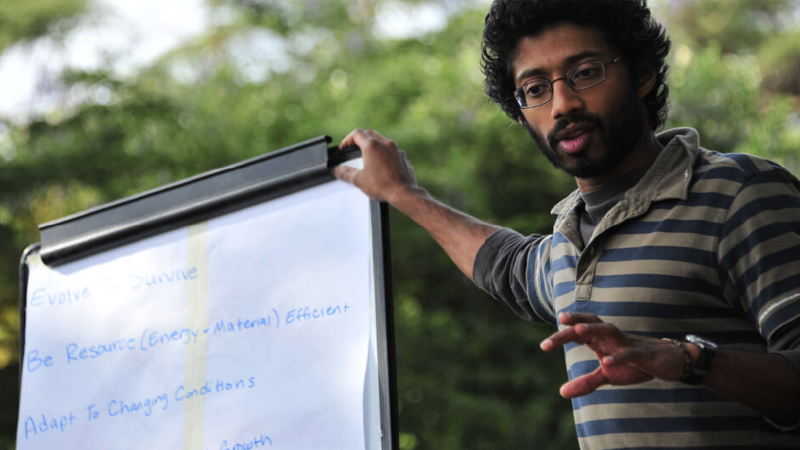In last week’s blog post, we described one of our upcoming courses – Storytelling as a Leadership Skill. This week, we present an interview about our upcoming Bio-Empathy course. Unfortunately, this course is already fully booked but we encourage you to check out our other available courses here.
Bio-Empathy: Learning from Nature
The stripes on a zebra are one of the most famous examples of “nature as innovator” – the alternating absorbing (black) and reflecting (white) stripes create an air current that keeps the zebra cool, and which many architects are now inserting into building design to save on energy costs.
“One amazing thing about nature is that it’s easily accessible, even in cities. Let us learn then to tap into it physically, mentally and emotionally. Gaining from it but with gentleness and peace, not forgetting that we human beings are nature.”
So says Dharshan Wignarajah, speaking with both passion and caution about Mother Nature. Born in Sri Lanka, Dharshan grew up in London but spent holidays with family back in Sri Lanka. He worked for over 6 years in the renewable energy industry, an experience that saw him develop several projects impacting thousands of people from South Africa, the Philippines, Sri Lanka, India and China. He has since then moved to London where he runs a consultancy focusing on organizational learning and leadership. Little would he have known, though, that those childhood holidays would greatly shape some of his beliefs today. As one of the Amani Institute instructors Dharshan will be covering Bio-Empathy, one of the courses in the Post Graduate Certificate in Social Innovation Management Dharshan describes Bio Empathy as the ability of emerging leaders to tune themselves to learn from nature. The course will explore various approaches that will see the participants opening themselves up to nature, getting inspired and learning more about themselves. They will explore concepts such as: how can we adapt to changes, evolving in a way that allows us to survive? This requires designing “life-friendly” approaches, through efficient utilization of our natural resources as well as integrating development with growth. At the end of the course, participants will have gained insight on how they can partner with nature to design systems that will solve human problems. With over 3.6 billion years of evolution, nature offers us a huge base to learn from. A famous example of how nature has shaped technology is how the Wright Brothers, who succeeded in flying the first aircraft in 1903 derived their inspiration from pigeons in flight. A century later, a company called Lincoln Renewable Energy is looking to build wind turbines whose shape resembles the wings of a bee. For emerging leaders in the social sector, Dharshan had the following tips to share:
- Social change is not easy
- Have unflagging enthusiasm
- You will fall countless times but you should learn to pick yourself up and keep going.
- Expect lots of goodwill and positive human response.
- Try not to change everything at once. Choose at least one thing to channel your energy to.
This interview was conducted by Martha Diana, who has worked with youth across Kenya, Tanzania, India and Uganda through AIESEC. Her passion is in career development, talent management, organizational development and education. She is currently a volunteer for Amani Institute.





